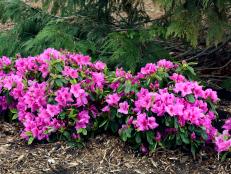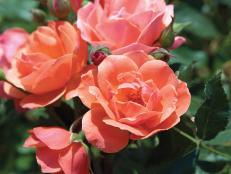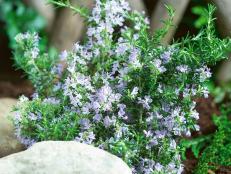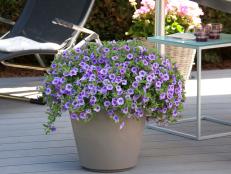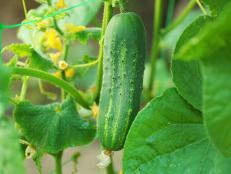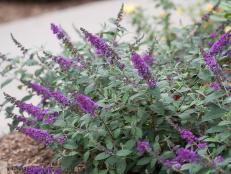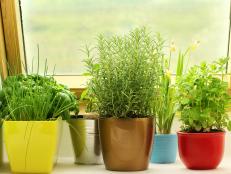How to Grow Hydrangeas in Pots
Learn how to grow these ever-popular flowering shrubs in containers for mobile garden color.
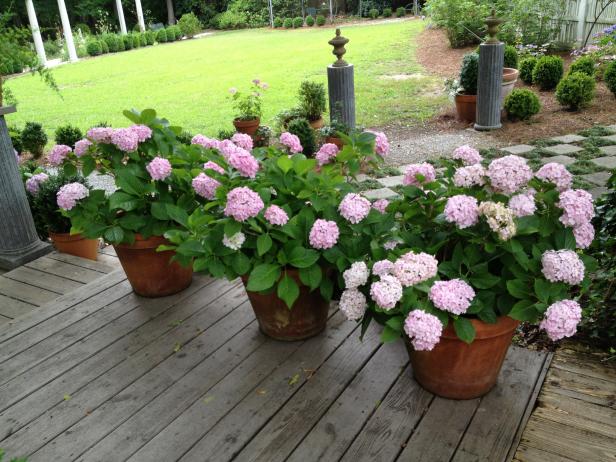
Photo by Lynn Coulter

If you’ve ever been given a hydrangea in a foil-wrapped pot, you probably enjoyed it or a few weeks, but then watched sadly as it declined. That might make you think hydrangeas aren’t good container plants.
Most potted, gift hydrangeas fail to thrive because they’re kept indoors too long. Others die because they’ve been raised in a greenhouse, and even if planted outdoors, they’re not cold hardy in your part of the country.
But hydrangeas can be great potted plants, if you make good choices. Here’s what you need to know.
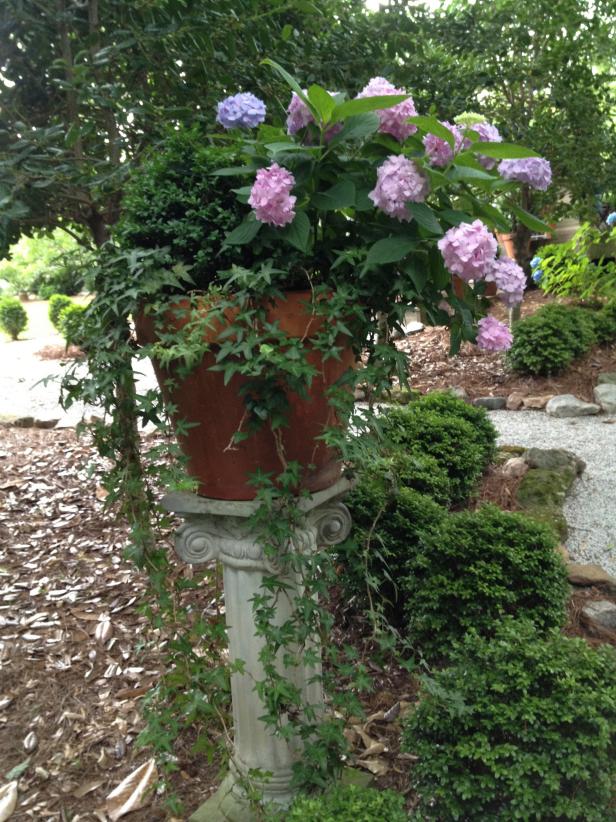
Photo by Lynn Coulter
- First, decide where you’ll put the hydrangeas. The beauty of growing them in pots is that you can move them around. Many hydrangeas like morning sun and afternoon shade, so this also makes it easier to give them the growing conditions they prefer. You can also move them around to decorate a patio or other space for a party or special occasion.
- When you’re choosing containers, look for pots with wheels on the bottom, or consider sturdy, rolling plant stands, unless your pots will remain in the same place all the time. Don’t forget that containers can get really heavy after you add dirt and plants, and watering will add to their weight.
- Choose a large container (at least 18 to 20 inches in diameter) for your hydrangea. Small pots—like the one your gift hydrangea came in—usually dry out too fast, causing the plant to wilt. If your container doesn’t have holes for drainage, drill some into the bottom. Water that stands around the roots can cause rotting.
- Next, choose a variety recommended for your region. (This is a rule of thumb for success with any plant.) Read plant tags or research varieties online to find the right ones for your garden. Most hydrangeas are hardy in USDA zones 4 to 8, and some can grow in zones 3 and 9.
- While you don’t have to use dwarf hydrangeas in pots, you may want to if your space is limited. Hydrangeas don’t just get tall; they also get bushy. Otherwise, plan on doing some pruning as your plants grow. Caution: while you’re doing your research, check to see if your variety flowers on old or new wood. If you prune at the wrong time of year, you’ll loose next year’s flowers.
- Use a good quality potting soil with organic matter, not ordinary garden soil. Plant the hydrangea at the same level that it was in its original pot (that is, don’t plant it deeper or higher than it was already growing). Leave some room below the rim of the pot, so you can water.
- Gently firm the soil around the roots to eliminate air pockets.
- When the top inch or so of the potting mix feels dry, water your hydrangea thoroughly. But it’s better to underwater than overwater. Hydrangeas will signal you by wilting when they need a drink, but that can stress them, so check them every day or so. After a little while, you’ll get a feel for how often to water. You may need to step up your watering in periods of drought or high temperatures.
- Hydrangeas don’t need a lot of fertilizer, but you can feed your plants once or twice a year with a slow-release balanced fertilizer, a 10-10-10 granular fertilizer or commercial, composted manure. Don’t fertilize after July or August if you live in a warm climate. Northern gardeners can get away with fertilizing only once, around June or July. Feeding later encourages tender, new growth, just when hydrangeas need to start going dormant for the winter.
- Don’t fertilize if your plant already looks sick or diseased; you’ll add only to its stress. Try to fix the problem instead.
- After the flowers finish, snip them off to encourage new growth.
How to Plant, Grow and Care for Hydrangeas
No garden’s complete without this old-fashioned favorite, and new varieties make hydrangeas easier than ever to grow.
Looking for compact or dwarf hydrangeas to grow in containers? Try these:
- Hydrangea paniculata ‘Little Lime’ – These summer flowers start out green and turn pink by autumn. The plant reaches 3 to 6 feet tall. Hardy in zones 3 to 9; takes part sun to sun.
- Hydrangea paniculata ‘Bombshell’ – This mounding shrub grows 2 to 3 feet high and bears white flowers with pink centers. Hardy in zones 4 to 8; for full or part sun.
- Hydrangea paniculata ‘Little Quick Fire’ – Watch for white flowers in summer that turn pink. Grows 3 to 5 feet high; likes part sun to sun. Hardy in zones 3 to 9.
- Hydrangea macrophylla ‘Mini Penny’ – This hydrangea grows to 4’ tall, with blue or pink “mophead” blooms in spring or summer. Deadhead the blooms when they fade, and the plants rebloom in fall. Hardy in zones 5 to 9; may be hardy in zone 4 if protected with 2 to 3 inches of mulch over the roots. Prefers full to part shade.
- Hydrangea macrophylla ‘Buttons 'n Bows’ – A compact shrub, this variety grows to 4’ tall in zones 6 to 9. The mophead-type flowers are edged in white. They start out pale green and slowly become pink. Likes part shade.








